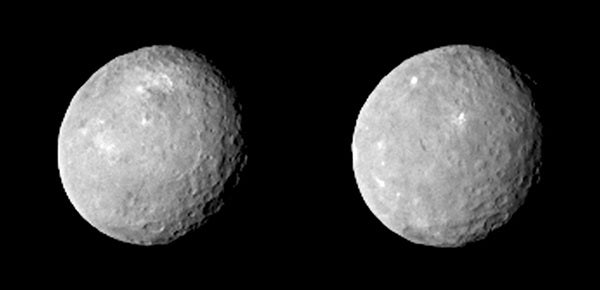“As we slowly approach the stage, our eyes transfixed on Ceres and her planetary dance, we find she has beguiled us but left us none the wiser,” said Chris Russell, from the University of California, Los Angeles. “We expected to be surprised; we did not expect to be this puzzled.”
Dawn will be gently captured into orbit around Ceres on March 6. As the spacecraft delivers better images and other data, the science team will be investigating the nature and composition of the dwarf planet, including the nature of the craters and bright spots that are coming into focus. The latest images, which have a resolution of 4.9 miles (7.8km) per pixel, represent the sharpest views of Ceres to date.
The spacecraft explored the giant asteroid Vesta for 14 months during 2011 and 2012. Scientists gained numerous insights about the geological history of this body and saw its cratered surface in fine detail. By comparing Vesta and Ceres, they will develop a better understanding of the formation of the solar system.










